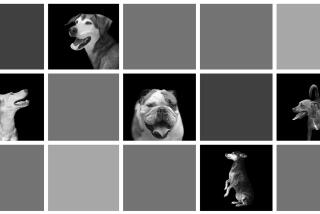Tattoo Registry for Pets Helps Fight Booming Trade in Stolen Cats, Dogs : Crime: Petnapers sell animals for research, breeding, dogfights and sometimes even for their fur and meat.
CHARLESTON, W.Va. — Catnaping is big. So is dognaping.
Dentist Bob Bloom was stunned when he came home recently to find his cocker spaniel, Millie, missing from his fenced back yard. Her blaze-orange collar was found under a nearby bush.
“It was like I’d been violated. I wish someone had just broken into the house and stolen some inanimate goods like a TV that I could go into a store and replace,” he says.
“Who’d steal a dog almost 8 years old?”
Plenty of people.
More than 2.5 million dogs and an unknown number of cats are stolen each year, according to Mitch Rapoport, director of the National Dog Registry of Woodstock, N.Y., a nonprofit hot line that advocates tattooing pets with identification numbers.
Petnapers can sell the animals for about $50 each to “bunchers,” who accumulate large numbers of animals before reselling them to puppy mills, research laboratories and people who run dogfights, Rapoport says.
“A research laboratory could pay as much as $500 for one, or more if they want a specific breed,” he says.
But there are also other markets.
Cats “make marvelous fur for gloves,” Rapoport says, and sometimes they become cat or dog food.
Stolen dogs and cats also are sometimes eaten by foreigners. “In some cultures, that’s an accepted food,” Rapoport says.
“Dogfight operators use an ungodly number of dogs. They’re more prevalent than cockfights.”
Occult worshipers use stolen animals for sacrifices, while puppy mills breed handsome specimens to supply pet stores.
“You go to a pet store and they tell you the pet comes with pedigree,” Rapoport says. “So what? There are organizations that do nothing but sell pedigrees.”
Former space shuttle astronaut Jon McBride and his wife, Sharon, still miss their husky-timberwolf mix, Dakota, who was stolen in March.
“It’s like yanking one of your children out of your family,” McBride says. “He was so friendly. He’d probably jump into a car if someone held the door open for him.”
When the McBrides searched their Lewisburg neighborhood, they learned a “mysterious” truck had been spotted nearby that day and about 10 other dogs also were missing.
McBride later discovered that dog stealing is a multimillion-dollar business.
“I went to a dog market, way up in a back hollow near Pikeville, Ky. It was awful,” McBride says. “There were hundreds of dogs in chains and people would barter over them and the guy who bought one would just grab it up and go.”
Dakota’s disappearance led McBride and West Virginia Agriculture Commissioner Cleve Benedict to launch a state pet registry program last August, similar to the one run by the National Dog Registry.
About 150 dogs have been tattooed and registered with the state since then, according to Nancy Staab, Benedict’s executive assistant and director of the project.
Veterinarians, animal groomers and humane societies can tattoo a number on the inner right thigh or lower belly of a dog or cat to help identify it.
“It’s the only identification that stands up in court,” Staab says.
“In the eyes of the law,” Rapoport says, “an animal is considered private property. But possession is nine-tenths of the law unless you can prove it’s yours.
“And nothing works as proof because dogs and cats don’t have individual identities. . . . They can’t be told from one another. Even if you call your dog and it comes to you, that’s not proof in a court of law.”
Tattooing animals can also be a deterrent to thieves.
“We encourage you to put a warning tag on your dog. It’s just like putting a sign on your car window saying, ‘Warning, burglar alarm.’ The thief just moves on to the next easy target,” Rapoport says.
“Registered dogs are less likely to be stolen and, if they are, the recovery rate is higher than 95%.”
The National Dog Registry has 4 million dogs and 400,000 cats on file.
Rapoport says the organization recently recovered a dog stolen nine years earlier from a woman in Columbus, Ohio. A veterinarian became suspicious when someone brought in an old minipinscher that looked badly abused.
The vet contacted the registry, which tracked down the owner at work.
“When her supervisor told her they found her dog, she said she doesn’t have a dog,” Rapoport says. “Then she thought about it and said she used to have a dog, but her dog was stolen nine years ago.
“We were listening on the speaker phone as the vet brought the dog in. She said, ‘Oh my God, that’s Tuner.’ And the vet said the dog went nuts and jumped into her arms.”
Another registered dog was saved from being part of a medical experiment when a University of Colorado technician in Denver found a tattoo while shaving the anesthetized Doberman’s belly for surgery in 1988.
The technician immediately aborted the experiment and the dog was returned to its owner.
“Research laboratories don’t want to use your pets,” Rapoport says.
McBride says stricter penalties are needed to stop dognapers.
“It’s only a misdemeanor in West Virginia and most other states,” he says. “We caught someone picking up a judge’s dog out of a yard and putting it in a truck, but he (the dognaper) was out the next day with a $100 fine.”
More to Read
Sign up for Essential California
The most important California stories and recommendations in your inbox every morning.
You may occasionally receive promotional content from the Los Angeles Times.










